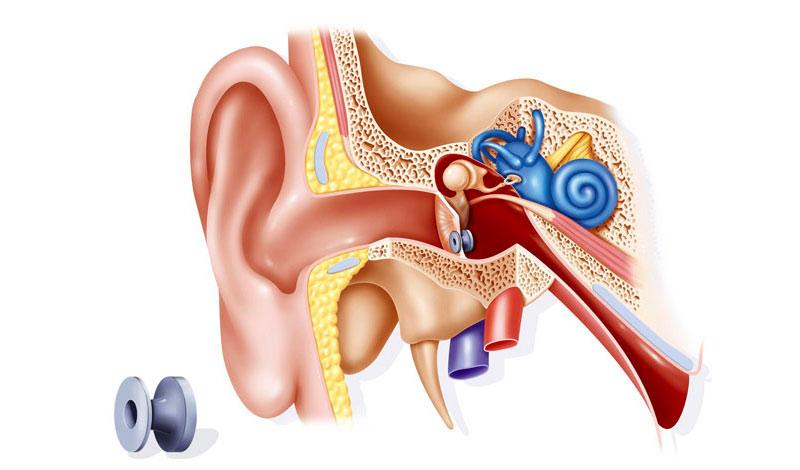Understanding Myringotomy: Procedure, Indications, and Recovery
Understanding the Procedure, Indications, and Recovery Process
Introduction: Myringotomy is a surgical procedure that aims to alleviate pressure in the ear and drain fluid accumulated in the middle ear. This article delves into the details of myringotomy, including its indications, the procedure itself, and the recovery process. By shedding light on this medical topic, we hope to provide a comprehensive understanding of myringotomy for those seeking information about this ear surgery.
What is Myringotomy? Myringotomy, also known as tympanostomy or ear tube surgery, is a surgical procedure involving the creation of a small incision in the eardrum (tympanic membrane). The incision allows for the release of pressure and drainage of fluid from the middle ear.
 Indications for Myringotomy: Myringotomy is commonly performed to address several conditions, including:
Indications for Myringotomy: Myringotomy is commonly performed to address several conditions, including:
Recurrent Ear Infections: Children who experience frequent ear infections may undergo myringotomy to alleviate symptoms, prevent future infections, and preserve hearing.
Otitis Media with Effusion: This condition occurs when fluid accumulates in the middle ear without signs of infection. Myringotomy helps drain the fluid, improving hearing and reducing the risk of complications.
Eustachian Tube Dysfunction: When the Eustachian tubes fail to function properly, it can lead to the accumulation of fluid and pressure in the middle ear. Myringotomy can help equalize pressure and restore normal middle ear function.
Barotrauma: This refers to ear damage caused by changes in pressure, often experienced during air travel, scuba diving, or mountainous ascents. Myringotomy can relieve pressure and aid healing.
The Myringotomy Procedure: During a myringotomy, the patient is usually under general anesthesia. The surgeon makes a small incision in the eardrum, allowing the trapped fluid to drain. In some cases, a tiny ventilation tube may be inserted into the incision to maintain proper airflow and prevent fluid accumulation.
The procedure typically lasts around 15 minutes, and patients can often return home the same day. The surgeon may provide post-operative care instructions, which may include ear drops, pain management, and precautions to avoid water entry into the ear.
Recovery and Outlook: After myringotomy, patients may experience temporary ear discomfort, mild dizziness, or fluid drainage for a few days. Pain medication and ear drops prescribed by the surgeon can help manage these symptoms. It is essential to keep the ears dry and follow the surgeon's instructions for bathing and swimming.
Most individuals recover quickly and notice an improvement in symptoms within a few days. The ventilation tubes inserted during the procedure typically fall out on their own after several months or may be removed by the surgeon if necessary.
Regular follow-up visits are crucial to monitor healing, tube function, and potential complications. In most cases, the ear returns to its normal function, and the risk of ear infections or fluid accumulation significantly decreases.
Conclusion: Myringotomy is a surgical procedure that effectively relieves pressure and drains fluid from the middle ear. With its potential to alleviate ear infections, restore hearing, and address various ear conditions, myringotomy has become a commonly performed surgical intervention. By understanding the procedure, indications, and recovery process, individuals can make informed decisions about their ear health and seek appropriate medical care when necessary.
Q&A
Q. What is myringotomy?
A. Myringotomy is a surgical procedure where a small incision is made in the eardrum to relieve pressure or drain fluid from the middle ear.
Q. Why is myringotomy performed?
A. It is typically done to treat conditions like chronic ear infections, middle ear effusion (fluid buildup), or to insert ear tubes to promote drainage and prevent further infections.
Q. Is myringotomy a safe procedure?
A. Yes, myringotomy is considered a safe and routine procedure, usually performed under local or general anesthesia, and the risks are minimal.
Q. How long does it take to recover from myringotomy?
A. Recovery time varies, but most people experience mild discomfort and temporary hearing loss for a few days. Full recovery typically occurs within a week.
Q. Are there any potential complications with myringotomy?
A. While rare, possible complications include infection, bleeding, perforation of the eardrum, or scarring. Follow-up care and precautions can help minimize these risks.
We are associated with experienced and highly skilled medical professionals. We use the latest medical technology available in the world and we provide medical services in collaboration with JCI & NABH Certified hospitals only. Our services include various types of treatment and organ restructuring and transplant.
